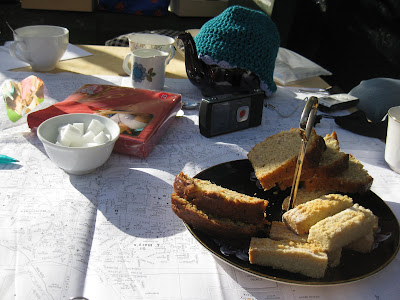


A description of the process of one team of masters students in Dundee. A study into sustainability and food. Understanding the relationships between people, culture and food.







1. raise awareness
2. increase local knowledge
3. encourage buying food from independent businesses rather than supermarkets
4. reduce food miles
5. connect people with the food they eat.
...but would it? It wouldn’t be particularly difficult to find out all the green food stuff and map it, but where does co-design fit in? Should we start by finding out what would help Dundonians to eat in a more sustainable way? Talking to the people who aren't engaged with this issue - about their food purchases and what stops them from buying local / organic / less packaging… is it cost / transport / lack of interest?
My feeling is that the map could be a way of raising awareness / initiating discussion, rather than an end point - a way of highlighting what the issues are for local people - what is working and what is missing.